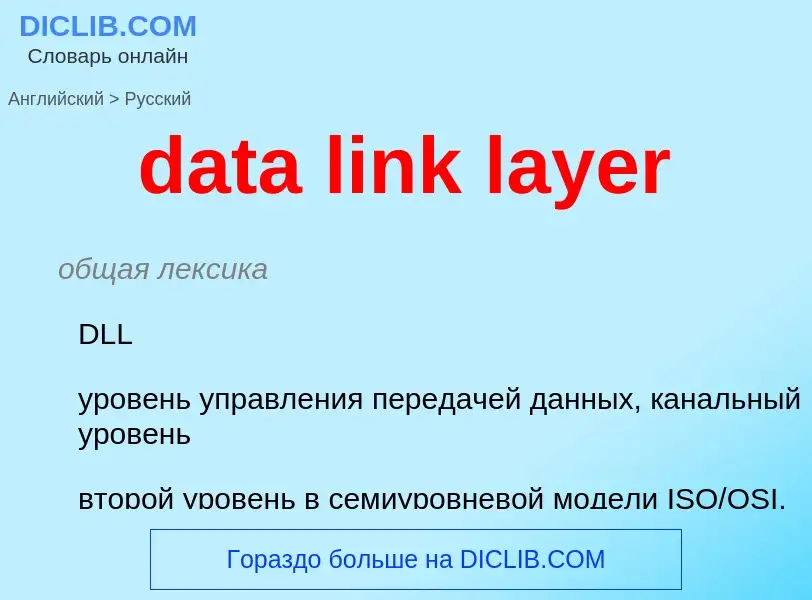Tradução e análise de palavras por inteligência artificial ChatGPT
Nesta página você pode obter uma análise detalhada de uma palavra ou frase, produzida usando a melhor tecnologia de inteligência artificial até o momento:
- como a palavra é usada
- frequência de uso
- é usado com mais frequência na fala oral ou escrita
- opções de tradução de palavras
- exemplos de uso (várias frases com tradução)
- etimologia
data link layer - tradução para Inglês
общая лексика
DLL
уровень управления передачей данных, канальный уровень
второй уровень в семиуровневой модели ISO/OSI. Определяет правила совместного использования физического уровня узлами сети. Имеет два подуровня: нижний MAC (Media Access Control - управление доступом к сети) и верхний LLC (Logical Link Control - управление логической связью)
Смотрите также
['gʌntəz,lɪŋk]
синоним
общая лексика
физический уровень
первый из семи уровней в модели OSI. Определяет требования к механическим свойствам кабелей и разъёмов, электрические характеристики сигналов, топологию сети, способ кодирования данных и некоторые другие особенности
Definição
Wikipédia
The data link layer, or layer 2, is the second layer of the seven-layer OSI model of computer networking. This layer is the protocol layer that transfers data between nodes on a network segment across the physical layer. The data link layer provides the functional and procedural means to transfer data between network entities and may also provide the means to detect and possibly correct errors that can occur in the physical layer.
The data link layer is concerned with local delivery of frames between nodes on the same level of the network. Data-link frames, as these protocol data units are called, do not cross the boundaries of a local area network. Inter-network routing and global addressing are higher-layer functions, allowing data-link protocols to focus on local delivery, addressing, and media arbitration. In this way, the data link layer is analogous to a neighborhood traffic cop; it endeavors to arbitrate between parties contending for access to a medium, without concern for their ultimate destination. When devices attempt to use a medium simultaneously, frame collisions occur. Data-link protocols specify how devices detect and recover from such collisions, and may provide mechanisms to reduce or prevent them.
Examples of data link protocols are Ethernet, the IEEE 802.11 WiFi protocols, ATM and Frame Relay. In the Internet Protocol Suite (TCP/IP), the data link layer functionality is contained within the link layer, the lowest layer of the descriptive model, which is assumed to be independent of physical infrastructure.



![Micrel]] KS8721CL - 3.3V Single Power Supply 10/100BASE-TX/FX MII Physical Layer Transceiver Micrel]] KS8721CL - 3.3V Single Power Supply 10/100BASE-TX/FX MII Physical Layer Transceiver](https://commons.wikimedia.org/wiki/Special:FilePath/Micrel KS8721CL on mainboard of Surf@home II-7778.jpg?width=200)
